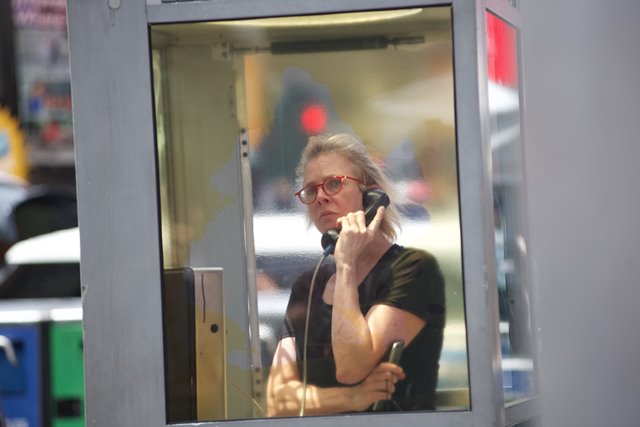In an era of ubiquitous smartphones, three new telephone booths in New York City’s Times Square are a curious draw for the throngs of people who pass by.
They stop for a double take. They step inside the analog boxes to snap digital selfies.
But then the phones start ringing. And when they pick up the receiver to answer, that’s when the oddity gives way to awe.
“I came out in 1986 due to the economy in Ireland,” the voice at the other end says sometimes. “My reason for coming was, you know, work wasn’t there. I needed to work, my parents had just died.”
“We lived in Belarus and we went through Chernobyl catastrophe,” another voice on the line may recount on another call.
They are the recorded voices of 70 immigrants — from Bangladesh, Gambia, Yemen and other far-flung places around the world — sharing their stories about coming to America.
It’s the brainchild of Afghan-American artist Aman Mojadidi, who has been collecting these stories from New York’s five boroughs for his art installation, “Once Upon a Place.”
“I wanted to address immigration within an urban context and amid a growing anti-immigrant rhetoric we were seeing around the world,” he told CNN by phone from Paris, France. “New York City is like a model city in that regard, built by immigrants and not destroyed by them.”
Mojadidi conceived of this project three years ago. But when he eventually began collecting the stories three months before the presidential election last year, it took on an added significance.
People were suspicious and nervous, he says. He reached out to people as they came out of grocery stores, or spent an entire day in a restaurant to strike up conversations with people at the next table.
The participants were surprised that someone actually wanted to hear their story, he says.
“It’s what people need to hear,” he says, especially given the ways immigrants are often portrayed as “some block representation of criminality.”
“These are human beings,” he said.
When the phone rings
The phone booths were salvaged from a city program that’s replacing pay phones with Wi-Fi kiosks. Mojadidi reconfigured them, and added a “phone book” with information about the immigrants’ communities. He kept the graffiti.
On an early July afternoon, for passers-by who stepped into the booths, there was a stark change in demeanor as the phone rang.
An expression of serious concentration took over their faces.
Jude Clymer said the woman on the phone reminded him of his own heritage.
“My great-great-great grandmother came here from Germany,” the teen said. “And their experiences as immigrants coming here kind of reminded me of that.”
A personal experience
The US has more immigrants than any other country in the world. With more than 40 million people born elsewhere, it accounts for about one-fifth of the world’s foreign-born population in 2015, according to a May 2017 Pew Research Center study.
Pew’s report states that most immigrants live in just 20 major metropolitan areas, with the largest populations in Los Angeles, Miami and New York.
“I really believe art in general and in this installation specifically can ask you the hard questions,” says Debra Simon, director of Times Square Arts who commissioned the work.
“It may not change your mind but at least it will give you an opportunity to receive a personal experience about immigration that you might not normally have had.”
The installation will stay up in Times Square until September 5, 2017.
